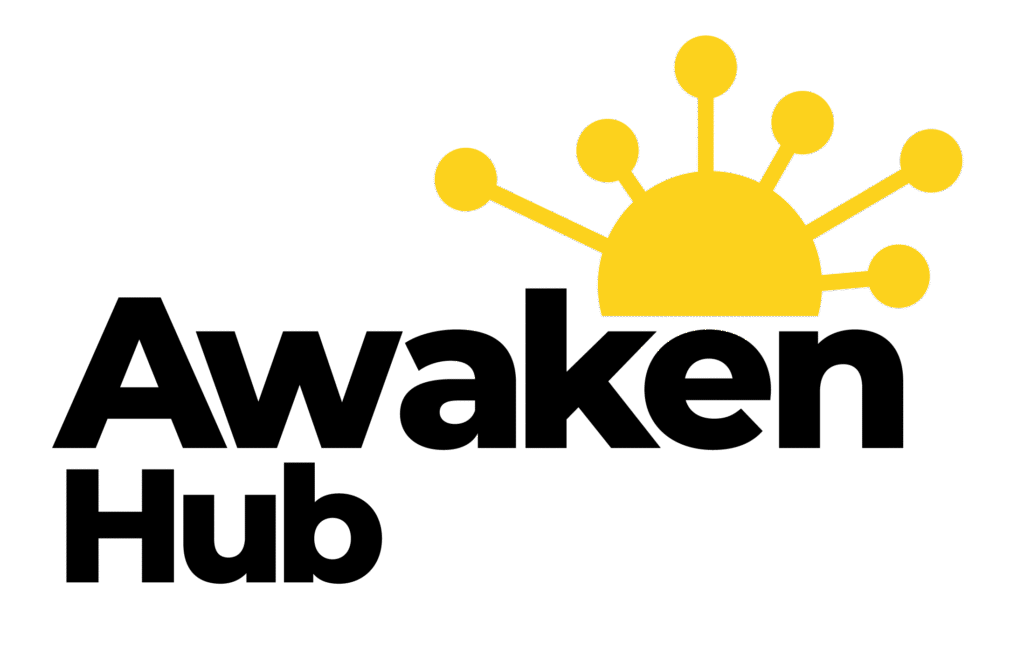Boost Your Site’s Performance with Page Speed Optimization
In the digital age, where attention spans are fleeting and competition is fierce, the speed at which your website loads…
In the digital age, where attention spans are fleeting and competition is fierce, the speed at which your website loads can significantly influence user experience and engagement. You may not realise it, but a mere second can make a world of difference. Research indicates that users expect a webpage to load in under three seconds, and if it takes longer, they are likely to abandon the site altogether.
This phenomenon is not just about convenience; it’s about creating a seamless experience that keeps visitors engaged and encourages them to explore further. When you optimise your page speed, you are essentially enhancing the overall usability of your site, which can lead to increased customer satisfaction and loyalty. Moreover, page speed optimisation is not merely a technical consideration; it has profound implications for your business’s bottom line.
A faster website can lead to higher conversion rates, as users are more inclined to complete purchases or sign up for services when they do not have to wait for pages to load. In fact, studies have shown that even a slight improvement in load time can result in significant revenue increases. Therefore, investing time and resources into optimising your page speed is not just a good practice; it is a strategic move that can yield substantial returns.
Summary
- Page speed optimization is crucial for user experience and can impact conversion rates and search engine rankings.
- Tools like Google PageSpeed Insights and GTmetrix can help measure and analyse page speed performance.
- Techniques for improving page speed include optimizing images, minifying CSS and JavaScript, and leveraging browser caching.
- Mobile optimization is essential for page speed, as mobile users expect fast loading times and account for a significant portion of web traffic.
- Page speed directly affects SEO, with search engines like Google considering it as a ranking factor for search results.
- Web hosting plays a significant role in page speed optimization, with factors like server location and performance impacting loading times.
- Common mistakes to avoid include neglecting image optimization, using too many plugins, and not leveraging content delivery networks (CDNs).
- Continuous monitoring and maintenance are necessary to ensure that page speed remains optimal, as website content and technology evolve over time.
Tools and Techniques for Measuring Page Speed
To effectively optimise your website’s speed, you first need to measure it accurately. Fortunately, there are numerous tools available that can help you assess your page speed performance. Google PageSpeed Insights is one of the most popular options, providing detailed insights into how well your site performs on both mobile and desktop devices.
This tool not only gives you a score but also offers actionable recommendations for improvement. By using such tools, you can identify specific areas that require attention, allowing you to prioritise your optimisation efforts. Another valuable tool is GTmetrix, which provides a comprehensive analysis of your website’s performance.
By understanding these metrics, you can pinpoint bottlenecks and make informed decisions about where to focus your optimisation strategies. Additionally, tools like WebPageTest allow you to test your site from different locations around the world, giving you a broader perspective on how your site performs across various networks and devices.
Strategies for Improving Page Speed

Once you have measured your page speed and identified areas for improvement, it’s time to implement effective strategies. One of the most impactful methods is image optimisation. Large images can significantly slow down your site, so consider compressing them without sacrificing quality.
Tools like TinyPNG or ImageOptim can help you reduce file sizes while maintaining visual integrity. Additionally, using the appropriate file formats—such as WebP for images—can further enhance loading times. Another crucial strategy involves minimising HTTP requests.
Each element on your webpage—be it images, scripts, or stylesheets—requires a separate request to the server. By reducing the number of these requests through techniques such as combining files or using CSS sprites, you can streamline the loading process. Furthermore, leveraging browser caching allows returning visitors to load your site faster since their browsers will store certain elements locally rather than fetching them anew each time.
Importance of Mobile Optimization for Page Speed
| Metrics | Importance |
|---|---|
| Mobile Page Load Time | Crucial for user experience and SEO ranking |
| Mobile Conversion Rate | Directly impacted by page speed |
| Mobile Bounce Rate | Higher bounce rate with slower page speed |
| Mobile User Engagement | Improved with faster page speed |
In today’s mobile-centric world, ensuring that your website is optimised for mobile devices is paramount. With an increasing number of users accessing websites via smartphones and tablets, a mobile-friendly design is no longer optional; it’s essential. Mobile optimisation directly impacts page speed because mobile devices often have slower internet connections compared to desktops.
If your site is not optimised for mobile use, you risk alienating a significant portion of your audience. Responsive design plays a crucial role in mobile optimisation. By ensuring that your website adapts seamlessly to different screen sizes, you can enhance user experience and improve loading times.
Additionally, consider implementing Accelerated Mobile Pages (AMP), which are designed specifically for fast loading on mobile devices. By prioritising mobile optimisation in your page speed strategy, you not only cater to user preferences but also align with search engine algorithms that favour mobile-friendly sites.
Impact of Page Speed on SEO
The relationship between page speed and search engine optimisation (SEO) cannot be overstated.
A slow-loading site can lead to higher bounce rates, which signals to search engines that users are not finding what they need on your site.
This can negatively impact your rankings over time. Moreover, Google’s Core Web Vitals initiative places significant emphasis on user experience metrics, including loading performance. By focusing on improving these metrics—such as Largest Contentful Paint (LCP) and First Input Delay (FID)—you can enhance both user experience and SEO performance simultaneously.
In essence, by prioritising page speed optimisation, you are not only improving user satisfaction but also boosting your visibility in search engine results.
The Role of Web Hosting in Page Speed Optimization

Your choice of web hosting provider plays a pivotal role in determining your website’s speed performance. Not all hosting services are created equal; some offer faster servers and better resources than others. When selecting a hosting provider, consider factors such as server location, uptime guarantees, and the type of hosting (shared, VPS, dedicated) that best suits your needs.
A reliable hosting service can significantly reduce server response times, which is crucial for overall page speed. Additionally, consider using Content Delivery Networks (CDNs) as part of your hosting strategy. CDNs distribute your website’s content across multiple servers located around the globe, allowing users to access data from the nearest server rather than from a single location.
This not only speeds up loading times but also enhances reliability during traffic spikes. By carefully selecting your web hosting provider and leveraging CDNs, you can create a solid foundation for optimal page speed performance.
Common Mistakes to Avoid in Page Speed Optimization
While striving for optimal page speed, it’s essential to be aware of common pitfalls that could hinder your efforts. One frequent mistake is neglecting to test changes before implementing them site-wide. It’s crucial to assess how each modification affects load times and user experience individually.
Failing to do so may lead to unintended consequences that could worsen performance rather than improve it. Another common error is overlooking the importance of regular updates and maintenance. Many website owners implement initial optimisations but then neglect ongoing monitoring and adjustments.
As technology evolves and new tools become available, it’s vital to stay informed about best practices in page speed optimisation. Regularly reviewing your site’s performance ensures that you remain competitive and continue to provide an excellent user experience.
Continuous Monitoring and Maintenance for Page Speed Optimization
Page speed optimisation is not a one-time task; it requires continuous monitoring and maintenance to ensure sustained performance over time. Regularly testing your website with the tools mentioned earlier will help you identify any emerging issues before they escalate into significant problems. By keeping an eye on metrics such as load times and user engagement rates, you can make informed decisions about when and how to implement further optimisations.
Additionally, consider setting up alerts for any significant changes in performance metrics. This proactive approach allows you to respond quickly to potential issues that could affect user experience or SEO rankings. By committing to ongoing monitoring and maintenance of your page speed optimisation efforts, you position yourself for long-term success in an ever-evolving digital landscape.
In conclusion, understanding the importance of page speed optimisation is crucial for anyone looking to enhance their online presence. By utilising the right tools and techniques for measurement, implementing effective strategies for improvement, and maintaining a focus on mobile optimisation and SEO impact, you can create a fast-loading website that delights users and drives conversions. Remember that web hosting plays a significant role in this equation, as does avoiding common mistakes and committing to continuous monitoring and maintenance.
With these principles in mind, you are well-equipped to optimise your website’s performance effectively.
If you are looking to improve your website’s performance, you may want to consider implementing page speed optimization techniques. According to a recent article on SEO for Lead Generation and Direct Marketing, having a fast-loading website can significantly impact your search engine rankings and user experience. By focusing on improving your page speed, you can attract more inbound leads and ultimately drive more traffic to your site. Check out the article for more tips on how to optimise your website for better performance.
FAQs
What is page speed optimization?
Page speed optimization refers to the process of improving the loading speed of a website’s pages. This involves various techniques and strategies to reduce the time it takes for a web page to load and display its content.
Why is page speed optimization important?
Page speed optimization is important for several reasons. Firstly, it improves the user experience by reducing the time it takes for a page to load, which can lead to higher engagement and lower bounce rates. Additionally, faster loading pages can also have a positive impact on search engine rankings, as search engines like Google consider page speed as a ranking factor.
What are some common techniques for page speed optimization?
Common techniques for page speed optimization include minimizing server response time, leveraging browser caching, optimizing images, using a content delivery network (CDN), minifying CSS and JavaScript files, and reducing the number of HTTP requests.
How can I test the page speed of my website?
There are several tools available for testing the page speed of a website, such as Google’s PageSpeed Insights, GTmetrix, and Pingdom. These tools provide insights into various aspects of page speed and offer recommendations for improvement.
What are the benefits of a faster page speed?
Faster page speed can lead to a better user experience, higher conversion rates, improved search engine rankings, and reduced bounce rates. It can also contribute to overall website performance and customer satisfaction.











